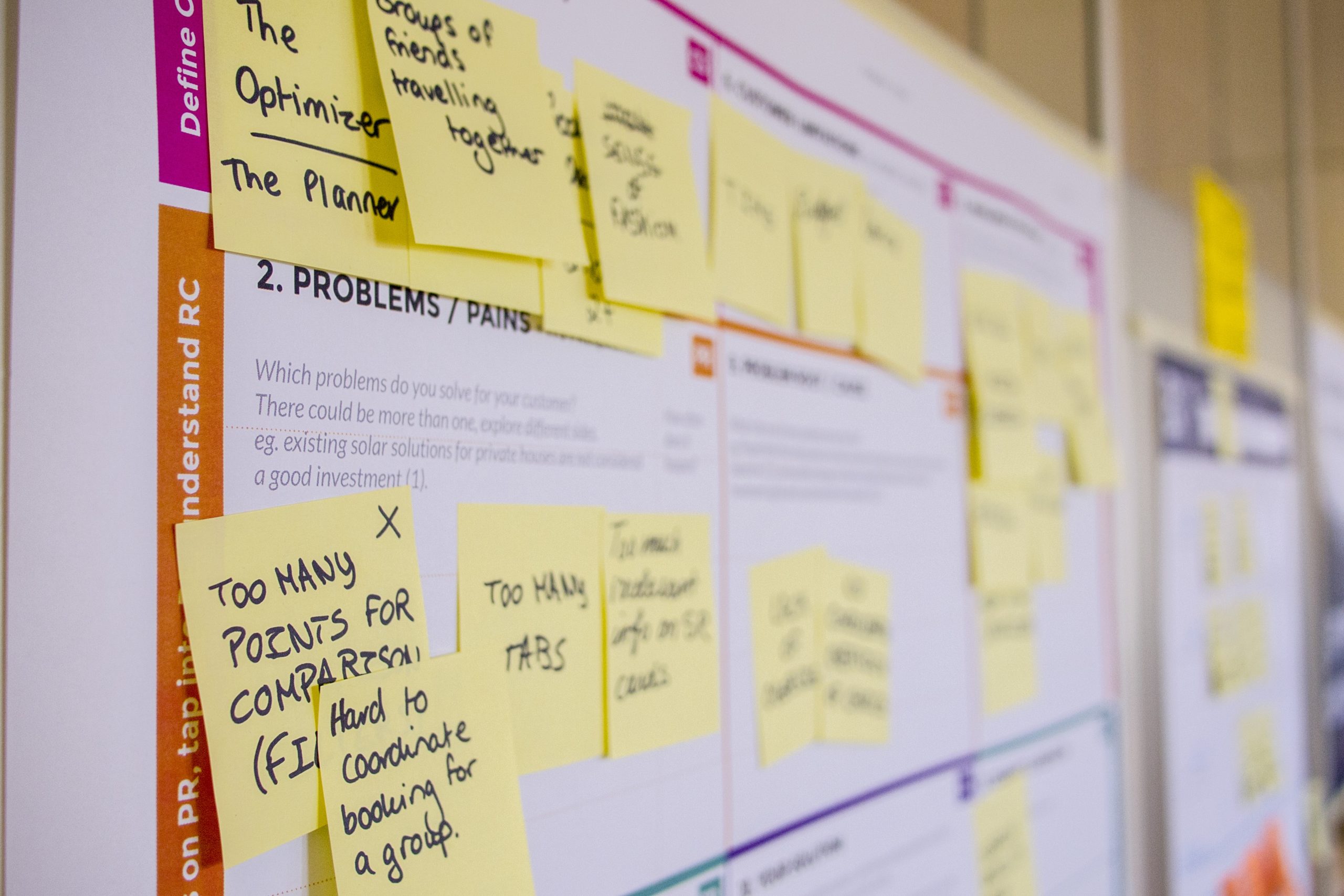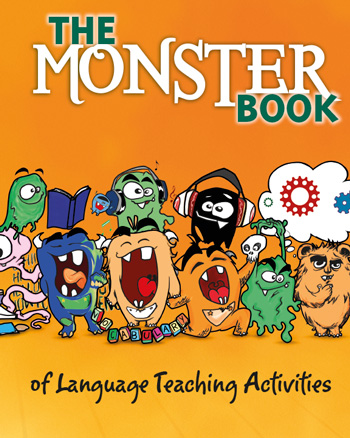Now Reading: Teacher’s Corner: A Story of Design Thinking in the Classroom
-
01
Teacher’s Corner: A Story of Design Thinking in the Classroom
Teacher’s Corner: A Story of Design Thinking in the Classroom

A photo by Daria Daria on UNSPLASH
Hannah, an experienced teacher, aims to assist her students in grasping the advantages of learning the English language and American culture more effectively. Despite being good students and excelling in quizzes and tests, they encounter difficulties applying their knowledge outside the classroom. Many students choose to wait until they attend university or travel abroad to practice English, but Hannah believes their language skills can already be put to use. She ponders, “How can we utilize our English-speaking abilities and understanding of American culture to address a community issue?”
How can we transform our classrooms into environments that equip our students to tackle significant challenges in the world while acquiring the necessary English language skills for effective communication? How can we improve the design of learning experiences to meet students’ needs and achieve educational objectives?
The solutions to these questions might lie in adopting a design-thinking approach to teaching and learning. Design thinking is a problem-solving approach driven by empathy and focused on aiding people. This article delves into the key characteristics of a design thinking mindset, the distinctions between design thinking, design processes, and designed products, as well as two ways to incorporate design thinking into teaching practices.
Design Thinking Vs. Design Process Vs. Designed Product
A search for “design thinking” on the internet yields a plethora of results with seemingly conflicting information or suggestions. This abundance of information can be overwhelming for beginners in design thinking. To alleviate this feeling of overwhelm, it is beneficial to differentiate a design thinking mindset from a design process and a well-designed product, while recognizing the significance of empathy in all three aspects.
A design thinking mindset encompasses the mental habits and behaviors that enable individuals to engage in design thinking and create effective designs through a design process. Key qualities of a design thinking mindset include the belief that mistakes lead to new knowledge, the willingness to try new ideas without waiting for ideal circumstances, and the ability to embrace discomfort. Embracing a design thinking mindset can be a messy and challenging experience that demands a departure from conventional thinking.
A design process entails a phased procedure that individuals follow to develop an effective design. Most design processes consist of five or six phases, although some may have as many as twenty-two stages. This article introduces a simplified four-stage process that is easy to learn. Unlike linear processes with a clear start, middle, and end, a design process is cyclical. Designers may start with one phase, proceed to the next, but may find it necessary to revisit the initial phase before advancing to the subsequent phases and ultimately producing a prototype design in the final stage. Crucially, all decisions during the design process should be guided by empathy, which involves an awareness of and sensitivity to others’ experiences and emotions. Empathy serves as the driving force behind design thinking and the design process.
A well-designed product is the outcome of embracing a design thinking mindset and following a design process through to completion. For a product to be considered well-designed, it must meet the needs of its primary users. The best designs strike a balance between form and function: they are aesthetically pleasing and function effectively. Exemplary designs can be observed in mobile phones and automobiles, where both appearance and functionality are key considerations.
Utilizing Design Thinking as an Educational Tool
By cultivating their design thinking mindsets, students are equipped to apply the knowledge gained in their courses to address problems meaningfully, guided by empathy and an understanding of others’ needs. English language learners can leverage their newfound skills to tackle issues related to accessing resources in their communities, addressing misunderstandings of their culture by global audiences, or improving communication within their families. Given that empathy-driven problem-solving can be challenging, having a straightforward yet powerful process to follow is invaluable.
Mary Cantwell, an educator from Atlanta, Georgia, developed DEEP DT as a design process that is accessible to anyone. Originally designed for her young students, DEEP DT has been successfully implemented worldwide with students of varying ages and backgrounds.
DEEP stands for Discover, Empathize, Experiment, Produce, while DT signifies Design Thinking.
During the DISCOVER phase, students engage in researching and understanding the problem they seek to solve. This phase may involve reading articles, watching videos related to the issue, or interviewing experts working on similar problems. Students focus on gathering information, taking notes, and collecting resources that can aid in problem-solving. This phase also serves as an opportune time to form groups or design teams, fostering collaboration among students as they embark on solving the problem. Team members can use this phase to familiarize themselves with each other’s strengths and weaknesses and establish how responsibilities will be shared.
At the onset of the following class, Hannah prompts the students to brainstorm a list of community issues they have identified. After compiling individual lists, the students share and consolidate them, identifying common themes. They observe that many community members are concerned about the rising water levels in a local river and its implications on transportation services, harvest seasons, and housing safety.
In the EMPATHY phase, the design team dedicates their efforts to understanding the needs and perspectives of the individuals who will benefit from the solution, known as “the users.” This phase focuses on adopting the users’ viewpoints rather than the designers’ perspectives to create solutions that genuinely meet users’ needs, rather than opting for convenient or cost-effective solutions.
Following the initial brainstorming and experimentation, students are encouraged to consider creative constraints – essential boundaries within which an effective solution must operate. These constraints can relate to the size and costs of a solution, the materials used, or the number of users it must accommodate.
In the experimentation phase, English language learners may be tasked with expressing their ideas or labeling sketches in English. They might present their most promising ideas to other teams or offer insights and feedback to their peers. Hannah guides her students in defining the problem they aim to solve: assisting the community in managing the impacts of rising river levels to enhance safety and security. After dividing into teams, generating ideas, and exploring potential solutions through sketches, models, and discussions, the students select a solution: sharing their community’s story with international non-profit organizations focused on climate change concerns.
The PRODUCE phase, the final stage of DEEP design thinking, requires students to develop a solution ready for user feedback. It is essential to understand that the solution in this phase does not need to be flawless or professional. Designers refer to these solutions as “prototypes” – initial attempts that are complete enough to garner feedback. Students may seek feedback on their prototypes through interviews, surveys, observations, or other means to assess effectiveness.
Upon completing the PRODUCE phase, students are encouraged to refine their solutions and create second iterations based on feedback. An iteration represents a revised version of a solution informed by feedback. Embracing design thinking encourages a focus on iterations rather than final products, fostering a mindset where every learning experience is viewed as an opportunity for growth and improvement.
The students collaborate with Hannah to craft an English podcast detailing the community’s situation concerning the rising river levels. They translate community interviews into English, integrate segments into the podcast, compose music for the introduction, and edit the project on Hannah’s computer. They capture photos of the area, add English annotations to the images using Hannah’s computer, and create diagrams depicting the river’s changes. They develop a simple website featuring the photos, upload the podcast, and prepare to share the website link with ten international organizations, including those in the U.S., Canada, and Great Britain.
Before sending out the podcast, the students seek feedback from community members on the story and images. Feedback prompts revisions to include more details and address translation queries. Some community members express a desire to hear their own voices in the podcast, leading the students to revise the content and share an updated version a week later. This time, the community members are satisfied, and the students disseminate the podcast.
Reflecting on the students’ work and the skills demonstrated in translations, interviews, introductions, and discussions, Hannah contemplates the next steps for her students’ learning experiences.
Adopting Design Thinking in Instructional Planning
Educators may find the prospect of integrating a design challenge into their classrooms daunting due to perceived time constraints or complexity. These concerns are valid reasons for caution and apprehension.
Nevertheless, educators can embrace a design thinking mindset and apply a design process when developing lessons, activities, curriculum, and assessments. Consider the impact on students if teachers view failed exams as opportunities for revision and additional learning attempts. There is immense value in exploring a range of solutions for classroom challenges rather than settling for the initial idea that comes to mind. Students benefit when teachers model grappling with new concepts and acknowledge the discomfort that may arise from encountering unfamiliar information.
When planning instruction or devising new assessment methods, consider employing DEEP DT. Begin by exploring various strategies and assessment forms related to the challenges faced by you and your students. Engage in empathy work with students, understanding what constitutes a meaningful learning experience for them. Encourage them to share stories of successful and challenging moments in class, leveraging their responses to generate numerous ideas. Develop an idea that aligns with curricular goals and students’ expressed needs. Pilot the idea with students, allowing for a somewhat messy and intricate experience, and gather feedback to refine the strategy with confidence in its effectiveness.
Preparing for Opportunities Ahead
Approaching teaching as a challenge to be addressed through empathy broadens the scope for diverse solutions unconstrained by personal experiences. By attentively listening to students to comprehend their perspectives rather than solely expressing one’s opinions, educators spark innovative instructional ideas and learning opportunities that may otherwise remain unexplored. Embracing the notion that teaching and learning involve challenges and struggles allows educators to acknowledge imperfections and perceive every lesson and interaction with students as a chance to enhance their craft continually.
This article was authored by contributing writer Dan Ryder.
For further insights, visit the Teacher’s Corner group on Facebook!
The AE Teacher’s Corner is a private Facebook group initially established for readers of Teacher’s Corner on americanenglish.state.gov. Evolving into a vibrant community of English language teachers and learners, the group engages in collaborative learning and mutual support. Participants are encouraged to delve into extended conversations, exchange teaching resources, and partake in contests centered around the monthly featured articles from Teacher’s Corner.
Join the private Teacher’s Corner group by clicking on the following link:
https://www.facebook.com/groups/AETeachersCorner/ Ensure to provide comprehensive answers to all three questions for acceptance into the group.






